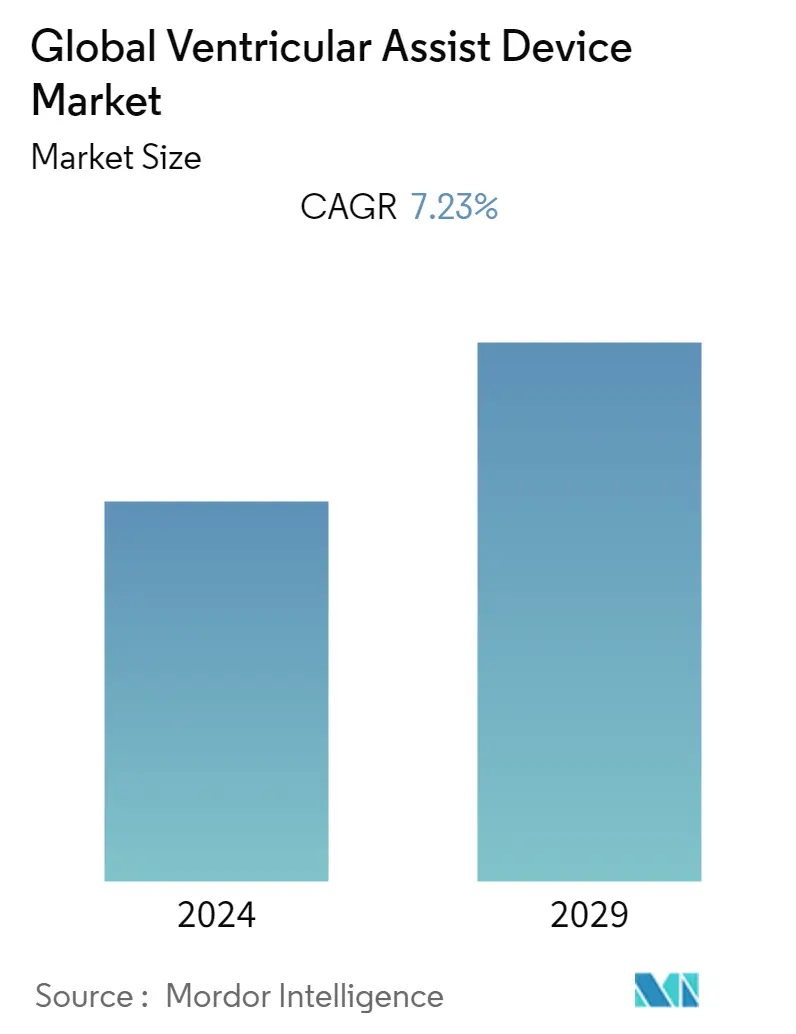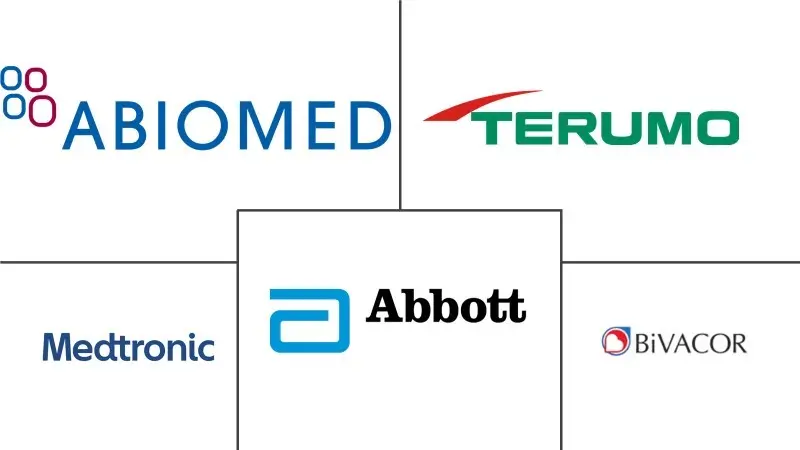Market Size of Global Ventricular Assist Device Industry

| Study Period | 2019 - 2029 |
| Base Year For Estimation | 2023 |
| Forecast Data Period | 2024 - 2029 |
| CAGR | 7.23 % |
| Fastest Growing Market | Asia Pacific |
| Largest Market | North America |
Major Players
*Disclaimer: Major Players sorted in no particular order |
Need a report that reflects how COVID-19 has impacted this market and its growth?
Ventricular Assist Device Market Analysis
The Ventricular Assist Devices Market is poised to grow at a CAGR of 7.23% during the forecast period (2022-2027).
COVID-19 is expected to have a significant impact on the growth of the market. According to the article titled ' Implantation of Durable VAD during COVID-19: An Epicenter Experience' published in 2021 new technological advances and creativity from the team allowed for the successful implantation of urgent Destination Therapy-Ventricular Assist Devices during the COVID-19 pandemic. Hence, the onset of the pandemic allowed various modifications to the existing process which are needed to accommodate a safe and comprehensive ventricular assist device plan. Thus, the ventricular assist device market is significantly impacted by COVID-19.
The major factors attributing to the growth of the ventricular assist device market are technological advancement of devices for cardiac disease management, growing initiatives and awareness regarding cardiovascular diseases, and the increasing burden of cardiac diseases and heart failure. According to the World Health Organization 2021, an estimated 17.9 million people die due to cardiovascular diseases worldwide, each year. This represents 35% of global deaths. Additionally, 85% of these cardiovascular disease deaths are due to heart attack and stroke. In addition, according to the article published in Cureus Journal of Medical Science in July 2020, ischemic heart disease (IHD) is a leading cause of death worldwide. Ischemic heart disease affects around 126 million individuals (1,655 per 100,000) globally, which is approximately 1.72% of the world's population. The global prevalence of ischemic heart disease is expected to exceed 1,845 per 100,000 by the year 2030.
VAD implantations are lifesaving equipment for patients with severe heart failure. They are useful in minimizing the symptoms of heart failure, thus helping patients to resume their daily activities. Coronary heart diseases associated with hypertension are a very common cause of chronic heart failure. Apart from that, other cardiac conditions, such as ischaemic and dilated cardiomyopathies, also require a significant level of surgical interventions. For all patient cases requiring advanced heart failure-related therapy, heart transplantation is a long-term successful procedure.
However, due to less availability of organs, the waiting time is more than six months. Such cases require the immediate assistance of VAD, which acts as a bridge to transplantation. Here, the demand for, and availability of, VAD plays a critical role, and thus, the growing burden of cardiac diseases and heart failure is a major force in propelling the VAD market at the global level. However, there are also risks involved in the VAD implant, hence these risks are showing an impact on the market growth.
